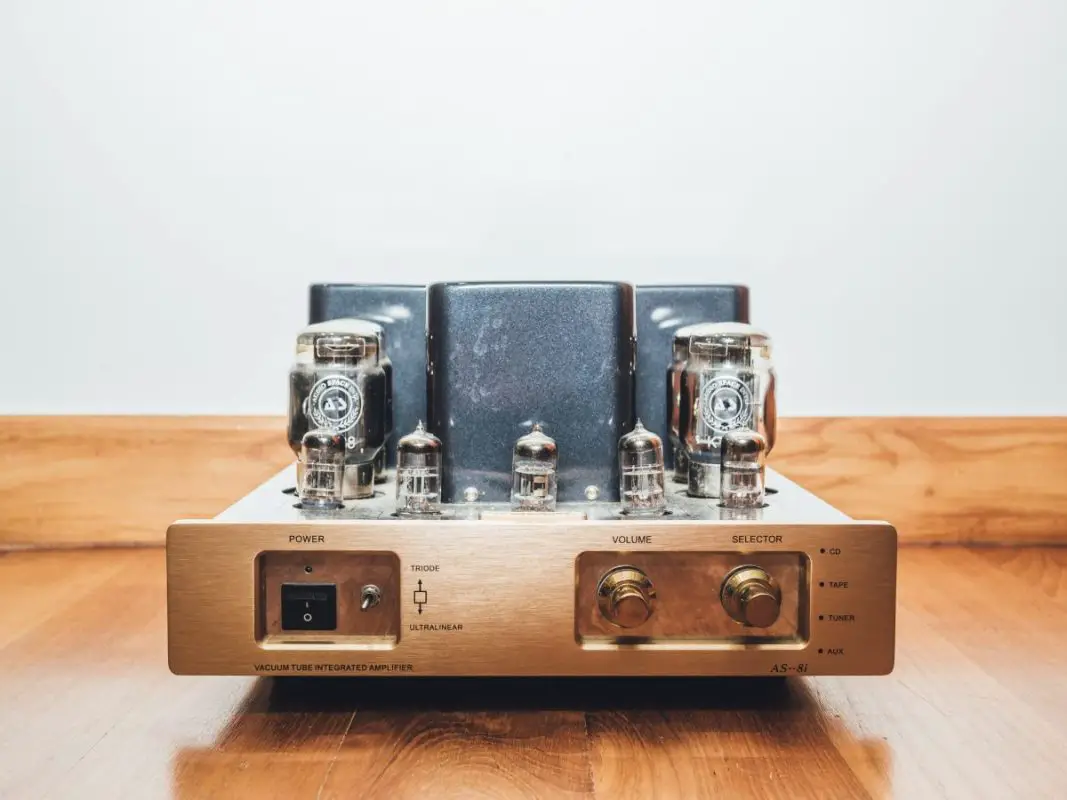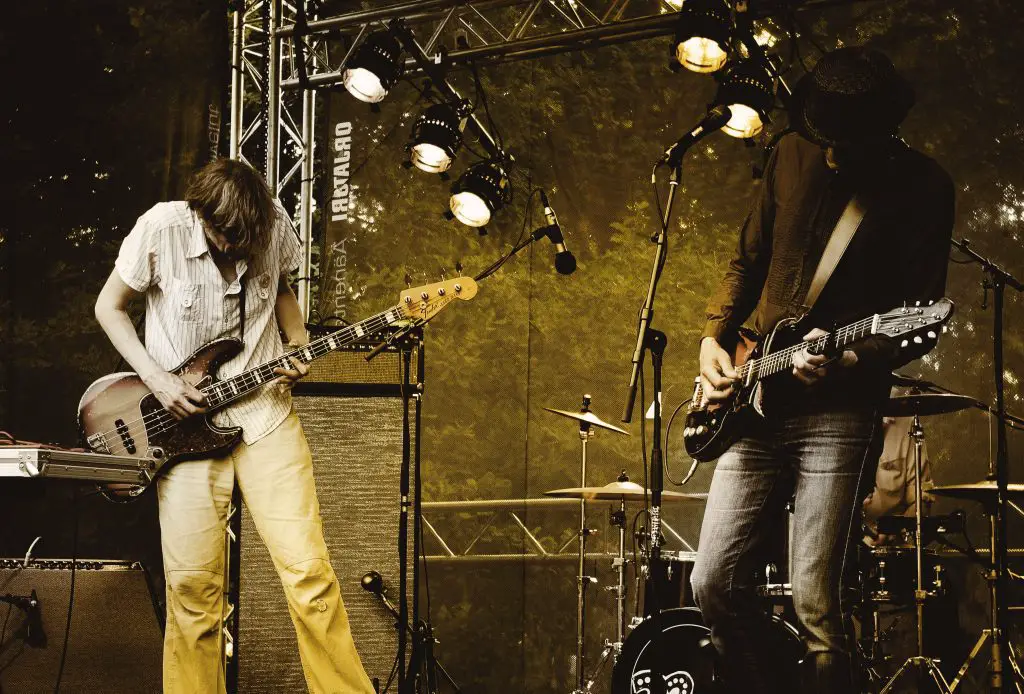Have you ever wondered how your favorite guitarists achieve that warm, vintage sound that sends shivers down your spine? Enter the tube amplifier, the sonic powerhouse behind legendary rock riffs and soulful blues solos. It’s time to dive into the world of tube amplifiers and unravel the magic behind their iconic tones. Are you ready to explore the sonic wonders of tube amplification? Let’s embark on this journey together!
What is a tube amplifier? A tube amplifier is a device that utilizes vacuum tubes to amplify the electric signals produced by musical instruments, offering tonal coloration and a distinct vintage sound that has captivated musicians for decades.
What are the different types of tube amplifiers?
Tube amplifiers for guitars come in various types, each with its own sonic characteristics and quirks. So, what sets them apart? Let’s dive into the two primary categories: Class A and Class AB amps.

Class A amps: Unleash the raw power
Class A amplifiers are like the rebellious rock stars of the tube amp world. They offer a raw, gritty, and often distorted sound that guitarists crave. These amps operate in a mode where the power tubes are biased to conduct electrical current continuously, even when there’s no signal. This means they’re always “on,” ready to unleash their full power.
- Distortion Galore: Class A amps tend to distort more quickly as you crank up the volume, delivering that delicious crunch and sustain.
- Instant Response: They offer immediate response to your playing dynamics, allowing you to achieve expressive and nuanced tones.
- Warm and Full-bodied: Class A amps are known for their rich, warm, and full-bodied sound that can make your guitar sing with soulful resonance.
Class AB amps: The versatile workhorses
Class AB amps are the versatile workhorses of the tube amplifier realm. They strike a balance between the raw power of Class A amps and the efficiency of solid-state amplification. These amps operate in a mode where the power tubes alternate conducting current depending on the input signal. This design allows them to handle higher power levels with improved efficiency.
- Headroom for Days: Class AB amps are favored by players who value “headroom,” the ability to maintain clarity and dynamics at high volumes without excessive distortion.
- Versatile Tonal Range: They offer a wide range of tonal options, from pristine cleans to aggressive overdrives, making them suitable for various genres and playing styles.
- Project Players’ Choice: Professional guitarists often own both Class A and Class AB amps, utilizing them according to the specific demands of a project. It’s like having a dynamic duo of tonal goodness at their disposal.

AKAI Professional MPK Mini MK3

AKAI Professional MPK Mini MK3
What are the different types of power amp tubes used in tube amplifiers?
Power amp tubes are like the heart and soul of tube amplifiers, contributing greatly to their distinct sound characteristics. Let’s explore some of the popular power amp tubes that have left an indelible mark on music history.
6L6: The American powerhouse
The 6L6 tube is an American legend known for its clean and punchy tone. With a robust construction, it has been a staple in amplifiers for decades, making it a favorite among guitarists in various genres.
- Classic American Sound: The 6L6 tube delivers a warm and articulate tone with excellent note definition, making it ideal for genres like blues, country, and classic rock.
- Balanced Frequency Response: It offers a balanced frequency response, emphasizing the midrange and producing a smooth and rounded sound.
- Popular Amplifier Associations: The 6L6 tube is closely associated with renowned amplifier brands like Fender, which used it in models like the Deluxe Reverb and Twin Reverb, shaping the sound of generations of guitarists.
EL34 tubes can produce a wide range of tones, from singing cleans to soaring lead tones, making them versatile for various genres…
EL34: The British invasion
If you’re a fan of British rock tones, then the EL34 tube is your ticket to that iconic sound. This tube type has played a pivotal role in the British invasion of rock ‘n’ roll and continues to be cherished by guitarists worldwide.
- Distinctive Crunch and Articulation: EL34 tubes offer a characteristic crunch, high-gain capabilities, and excellent articulation, delivering a tight and aggressive sound.
- British Rock Heritage: These tubes are deeply associated with legendary British amp brands like Marshall, which employed EL34 tubes in iconic models like the JCM800 and Plexi, immortalizing the British rock sound.
- Versatile Tonal Palette: EL34 tubes can produce a wide range of tones, from singing cleans to soaring lead tones, making them versatile for various genres, including classic rock, hard rock, and metal.
With power amp tubes like the 6L6 and EL34, you can uncover a world of sonic possibilities and embark on a tonal journey inspired by the likes of American classics and British rock legends. These tubes have earned their place in the pantheon of guitar tones, and it’s up to you to harness their magic in your music.
Check out some dos and don’ts of power amp tubes:
| Dos | Don’ts |
|---|---|
| Experiment with different power amp tubes to find your desired tonal characteristics. | Assume that all amplifiers using the same power amp tube sound identical. |
| Consider the genre and playing style when choosing power amp tubes. | Overlook the importance of proper biasing and maintenance for tube longevity and optimal performance. |
| Pay attention to the overall amplifier design and circuitry, as it greatly influences the final tone. | Dismiss the impact of speaker choice and cabinet design on the final sound. |
Can digital emulations capture the essence of tube amplifiers?
In the age of digital technology, emulating the sound of tube amplifiers has become a common practice. But the burning question remains: Can these digital emulations truly capture the essence and soul of a genuine tube amplifier?
Digital emulations have come a long way in replicating the characteristics of tube amplifiers. They utilize sophisticated algorithms and modeling techniques to mimic the behavior of tubes and their interaction with the input signal. While they can offer convenience and versatility, they fall short of fully capturing the essence of a genuine tube amp.
- Impressive Accuracy: Digital emulations can simulate the tonal qualities and response of tube amplifiers with impressive accuracy, offering a wide range of amp models and tonal options.
- Convenience and Flexibility: They provide the convenience of portability, easy integration with recording setups, and the ability to switch between different amp models with a few clicks.
- The Missing Ingredient: However, digital emulations still lack the organic warmth, harmonics, and dynamic response that make tube amplifiers so special. They often struggle to replicate the subtle nuances and the “feel” of a genuine tube amp.
Here’s a table that provides a quick comparison between tube amplifiers and digital emulations.
| Aspect | Tube Amplifiers | Digital Emulations |
|---|---|---|
| Tonal Character | Warm, rich, and organic with unique tube saturation. | Accurate modeling with a wide range of amp models and tonal options. |
| Dynamic Response | Highly responsive to playing dynamics. | Limited dynamic range compared to tube amps. |
| Portability | Often bulky and require maintenance. | Portable and easily integrated into recording setups. |
| Convenience | Manual adjustments required for tonal changes. | Easy switching between amp models with a few clicks. |
| Versatility | Limited tonal options within a specific amp model. | Offers a wide variety of amp models and tonal possibilities. |
| Authenticity | Genuine tube sound with unique characteristics. | Lacks the organic warmth and nuances of a true tube amp. |
So, while digital emulations can get you in the ballpark of a tube amp sound, they can’t quite replicate the true magic that occurs when electrons dance within those glowing vacuum tubes.
Advantages and disadvantages of tube amplifiers
Tube amplifiers have their own set of advantages and disadvantages. Let’s take a closer look:
Advantages of tube amplifiers
Genuine tube amplifiers offer a range of benefits that contribute to their enduring popularity:
- Warm and Organic Tone: Tube amplifiers provide a warm, rich, and organic tone with unique tube saturation, delivering a distinct sonic character.
- Responsive to Playing Dynamics: They exhibit high sensitivity to playing dynamics, allowing for expressive and nuanced performance.
- Timeless Sound: Tube amps have a timeless quality and have shaped the iconic guitar tones heard in countless classic recordings.
Disadvantages of tube amplifiers
While tube amplifiers have their charm, they also come with some drawbacks:
- Maintenance and Fragility: Tube amps require regular maintenance and tube replacements and can be sensitive to physical shocks.
- Bulky and Heavy: Tube amps are often larger and heavier than their digital counterparts, making them less portable.
- Limited Tonal Versatility: Each tube amp has its own tonal characteristics, limiting the versatility within a single amplifier.
It’s essential to weigh these advantages and disadvantages to choose the option that best suits your needs and preferences.
If you want even more great tips and information, watch this video called “Tube Amp vs Solid State – What’s the Difference?” from the Sweetwater YouTube channel.
Frequently asked questions (FAQ)
Do you still have questions about tube amplifiers? Below are some of the most commonly asked questions.
Can digital emulations perfectly replicate the sound of tube amplifiers?
While digital emulations have made significant advancements, they still fall short of fully replicating the authentic qualities of tube amplifiers. While they can come close in terms of tonal accuracy, the organic warmth, harmonics, and dynamic response of genuine tube amps are challenging to reproduce digitally.
Are tube amplifiers better than digital emulations?
The superiority of tube amplifiers or digital emulations depends on personal preference and specific requirements. Tube amplifiers offer a unique, warm, and vintage sound, along with high sensitivity to playing dynamics. Digital emulations provide convenience, versatility, and a wide range of amp models. Ultimately, it’s about finding the option that best suits your tonal needs and practical considerations.
Are tube amplifiers outdated in the modern music industry?
Tube amplifiers continue to be cherished by musicians and professionals in various music genres. While digital technology has its advantages, the unique sonic characteristics and timeless appeal of tube amplifiers have kept them relevant and sought-after in the modern music industry.
Conclusion
And there you have it, the lowdown on tube amplifiers and their digital emulations. From the warm and organic tones of tube amps to the convenience and versatility of digital emulations, it’s a world of options for guitarists to explore. Remember, while digital emulations have come a long way, they still can’t quite capture the full magic of those glowing vacuum tubes. So, whether you choose the warmth of tubes or the flexibility of digital, find what resonates with your sound and style.
Remember, I read and reply to every comment, so let me know if you have any further questions or if there’s anything else you’d like to learn about tube amplifiers! Share this article with a fellow musician and keep rocking on.
Key takeaways
This article covered tube amplifiers and their digital emulations. Here are some key takeaways:
- Tube amplifiers offer warm, organic tones with unique tube saturation and high dynamic response.
- Digital emulations provide accurate modeling and a wide range of amp models for convenience and versatility.
- Tube amps have their maintenance and portability considerations, while digital emulations may lack the organic warmth of tubes.















